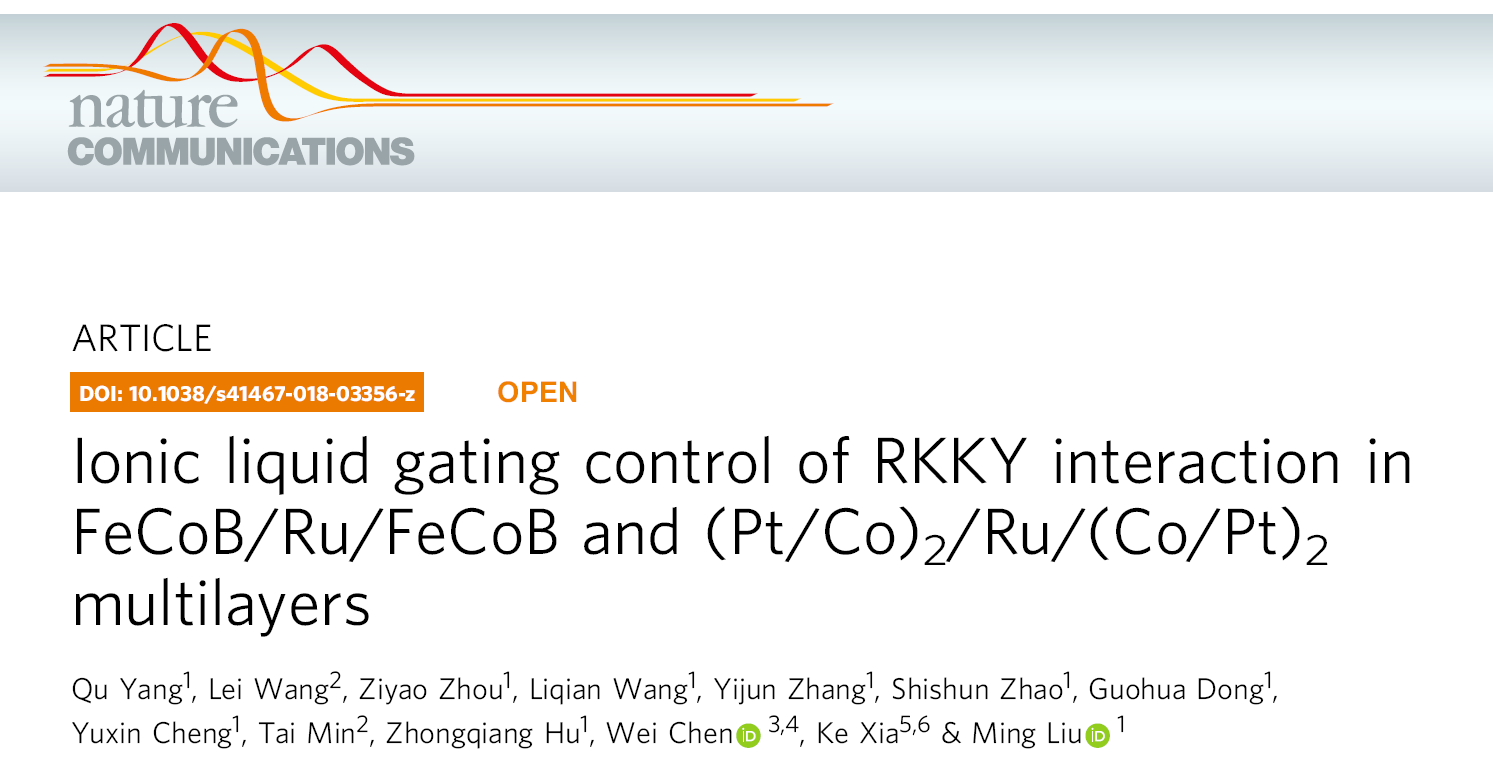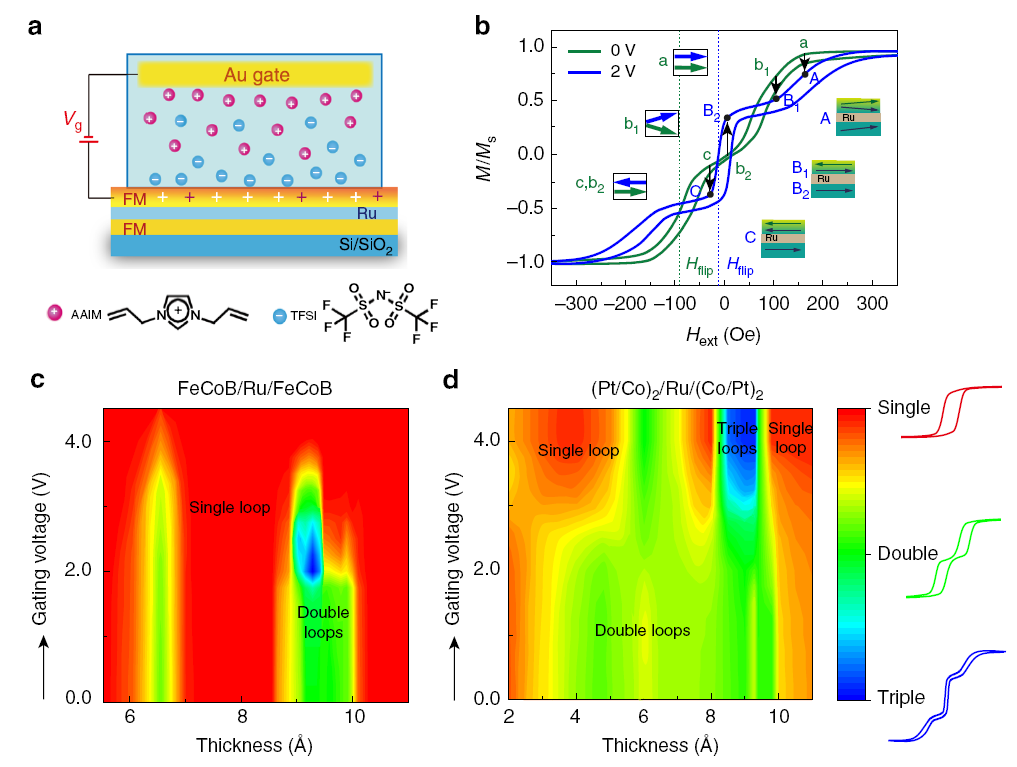Reported by Lei Wang

Antiferromagnetic (AFM) spintronics, as a fast growing cutting edge technology in spintronics, is of great importance for its tremendous potential in the next generation of spintronics applications. Compared with traditional ferromagnetic (FM) spintronics, AFM spintronics has several advantages, such as high magnetic field (H-field) stability, fast operation speed at THz, and wide compatibility to metal, semiconductor, or insulators. Contradictorily, the insensitivity of magnetic perturbation of AFM materials also limits the regulation of AFM spintronics by H-field. Therefore, AFM spintronics is usually controlled by spin-polarized current. However, this controlled way has a relatively large current density, which causes heat generation, energy inefficiency, and speed limitations.
On March 7th, 2018, Nature Communications published an article by The School of the Electronic and Information Engineering and The School of Material Science and Engineering in Xi’an Jiaotong University. The authors claim that with a small bias (2.5V) induced by Ionic liquid gating, the coupling between the two magnetic layers can be changed from FM to AFM. This amazing low voltage controlled magnetic switching can be used in new magnetic random access memory (MRAM) and more AFM based spintronics devices. Also the reviewers of this paper believe that the work has important scientific significance and practical application prospects.

This paper contains both theoretical and experimental works. The theoretical part is carried out by Lei Wang in Prof. Tai Min’s group in The School of Material Science and Engineering and the experiments are performed by Qu Yang in Prof. Ming Liu’s group with the help of Prof. Ziyao Zhou in The School of the Electronic and Information Engineering. Prof. Ke Xia from Beijing Normal University also gives lots of contributions in this paper.
The full article can be accessed with the following link: https://www.nature.com/articles/s41467-018-03356-z


